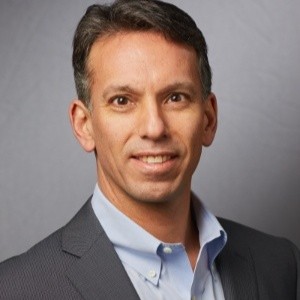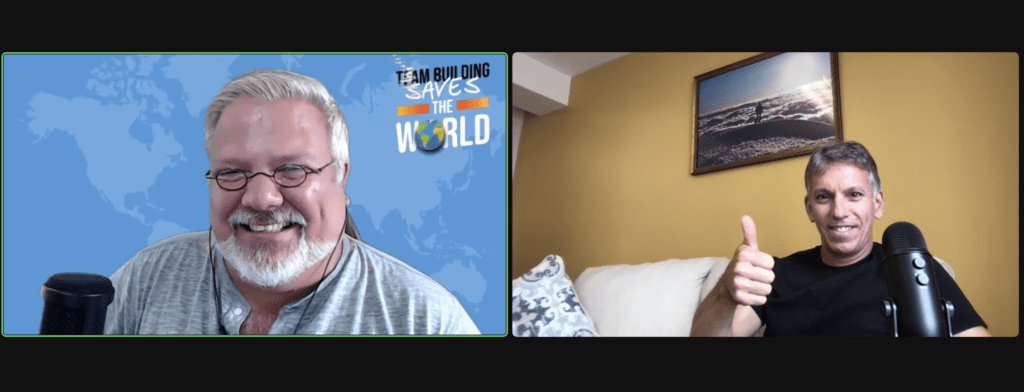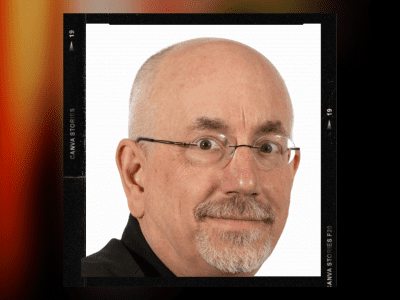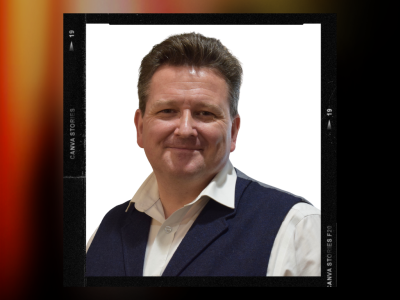Revealing Workplace Dynamics
w/Dr. Eric Frazer
Use the buttons above to listen now.
Transcript - Revealing Workplace Dynamics
Rich: On this episode of team building saves the world.
Eric: Your personality is kind of like your skin. You, you bring it with you everywhere. , you’re willing to give up, you know, like a $10,000 attrition fee for an $800 expresso machine. What you’re. And that’s if you bought a new one, right, right. So it’s gonna hit a breaking point and it does.
And, and that’s why people like me get called in. It’s like, well, we’ve got this huge attrition problem. It’s like, yeah, no kidding. . And, and here’s the reason why it’s pretty simple. What are you gonna do about it?
Rich: Hello team. It’s me, your old friend, Richard Rininsland host of team building saves the world. The show where I speak to the leaders and innovators and employee wellness and corporate culture on how it reflects in the world of today. And today we’re talking workplace dynamics with psychologist and author Dr. Eric Frazer. But first I do need to share some love with my supporters at team bonding. If your team is ready to experience teamwork through the power of play to visit team bonding.com to learn more now team join me in welcoming the author of the psychology of top talent, the practical scientifically proven method to identify, hire, and develop high performers.
Dr. Eric Fraser,
Dr. Fraser, that is just a small group of people. I keep chained up under my desk so they can applaud.
Eric: Well, good chain him back up and, uh, let him, let him loose in a, in a little while into the podcast.
Rich: Awesome. All right. So, um, is it okay if we call you Eric? That all right.
Eric, let’s start out. Nice and simple. Just, uh, tell my team out there. Tell ’em a little bit about yourself and how it is you got into this field of work. .
Eric: Yeah, so I’ve been a psychologist for about 22 years now. And, uh, it was something that I was just extremely passionate about. And when something that you’re passionate about resonates the rest kind of unfolds with a lot of deep learning and hard work.
Now in, in my work on consulting to organizations on people, development, professional development, leadership skills, and coaching clients, one on one. And then, you know, with the coaching clients, it all starts with passion. I’m like, what are you hungry about? And that’s what they come to me to really dig deep into
precisely refine and set some objectives and, you know, have those success metrics get knocked out of the park in the foreseeable future.
Rich: Now your LinkedIn, has you listed as a, uh,
Eric: a rising star?
Rich: that too. That too. No, a forensic psychologist. That’s what I was going for. It has you listed as a forensic psychologist?
What is forensic psychology. And how do you use that in your field.
Eric: Yeah. So it’s, it’s a really fascinating career. And that’s where I, I, I began and spent a, an abundance of my time professionally before moving into sort of what I’ll call leadership psychology and positive psychology. But it, it really has to do with matters in involving the intersection of psychology in the law, and really what it boils down to sort of brass tax in, in a little bit more layman’s languages.
It’s like solving puzzles on complicated psychological legal cases and what the, the advantage that gave me was really, um, the ability to come across all walks of life in all kinds of situations, in very comp complex scenarios and disentangle personality behavior. Psychological disorders and really put it together into a meaningful, useful way that would bring some kind of resolution to a court case.
So fast forward, uh, with, with all of that time training experience, working with personalities and personal styles and complicated psychological conditions. It’s really empowered me when I meet with people to really appraise them very, very rapidly and to precisely hone in and pinpoint, okay, this is it, right.
This is what you’re looking to improve. These are the sort of, um, friction areas in your, in your life. And here’s how to remove them. Ready, set go.
Rich: Because we’re talking workplace dynamics. We’re I mean, which to me, when you just trying to define it, we’re talking about the different personalities and how they all manage to work together toward common goals.
Um, do you have a different definition of that or does that sound about right?
Eric: That that’s certainly fair and. You know, working towards common goals and, you know, that’s definitely ubiquitous across all organizations. And I, I can tell you firsthand personalities, they fall in the continuum, right? So when you have a real misalignment with personalities in the workplace, you have some serious problems.
And when there’s a good selection process, in terms of the hiring, then you tend to have alignment towards the organizational goals. Never a perfect scenario, but certainly one that’s more fluid and harmonious.
Rich: Yeah. And it’s, it’s hard to imagine. I mean, I remember back in the day long ago when I used to actually use corporate world as my bread and butter while getting my life as an entertainer and a performer and creative going and running, but there’s so many different types of people.
And even now, when you’re looking at five different generations in the workplace, everybody come coming from a different cultural location and, and cultural background. How do you manage it? How do you, how can you manage to keep all of these disparate personalities working together smoothly?
Eric: Yeah. So that’s, you know, that’s complicated.
Mm-hmm um, but also very simple. So everyone’s always gonna come. You brought up two interesting points. So one is, you know, individual personalities, right? The second is what I’m gonna call sort of generational values, right? Or cross-generational or intergenerational values that come in with specifically different workplace values.
Right. And different workplace expectations. Right? Right. So we’re talking about, you know, work life balance, you know, PTO, um, continuous learning and professional development and, you know, mentoring and coaching, like all these things that are sort of younger workforce expectations. Whereas before, you know, in, in earlier years, those were, those, those were reserved for C-suite folks.
um, exactly. So really, you know, what really matters most is finding where a person’s core values sit, right? Are they aligned with the organization’s core values? And you have to ask very simple questions to discover that that’s really the key. Like why is our organization of interest to you? Why do you think this would be a good fit for your professional interest?
What kind of expectations do you have for your professional life in this organization? What are your short term and long term goals? When you do that, then you are able to understand if the organization can actually align itself with those beliefs, attitudes, values, and goals. And you can have a situation that where there is parody in terms of expectations and outcomes.
Lastly, on the personality side, you know, what really needs to be done. And this comes more from sort of my forensic background, right? Like everybody has personalities, but not everybody has personality disorders. Okay. Ah, sure. You know, The the, the Dr. The highly dramatic person, the narcissistic boss. Right?
So the, you know, these people are out there and worked and coached and spoken with countless people, you know, who leave companies for those reasons, or on alternatively people like, like those that I just described get fired. So you really have to have some dialing in. And some tuning into problematic personalities.
And the way that you can detect that before you make a hiring mistake is go back and speak with, you know, references that are listed and ask some of those questions. How did this person relate with the team? How did this person, you know, take feedback, things like that.
Rich: Yeah. Cause I remember, uh, at one point I had gotten to a mid-level management position myself, and any time that I had to interview someone, I was told very specifically
all we really can know is when did they actually work? When was their hire date? When was their fire date? We could not allow their reference to give us a bad indication or a negative indication about the hiree . How do we get around that in the world of today? .
Eric: Yeah. So, so times have changed. I think there is more latitude in candidate interviews and the candidate interviews.
What I recommend is it comes from actually forensic psychology. It’s a, it’s a proven method called structured professional judgment as a psychologist, as you can imagine, I’ve. I’ve had my hands on all kinds of personality tests over the years. And, and one would think that my bias would be to say, oh, you know, through all kinds of tests at the person to really identify, you know, where are they in the big five and et cetera, et cetera.
Uh, but actually there’s a lot of error in psychological tests of all kinds. And, and people don’t think about that. And the second thing is with psychological tests, they weren’t normed and standardized meaning these tests were not developed and designed for generation Z hirees right, right. So, um, so they’re really outdated and some of the newer instruments that are cloud based and such, you know, they don’t, they’re not peer reviewed.
They don’t have published review data, you know, really supporting that. They, they actually measure what they say they’re measuring. So S PJ structured professional judgment gets to the notion of we have known research, established attributes and personality features of top talent of what I’m gonna call core psychological competence, or you could call it emotional intelligence.
Okay. So one example would be continuous learning, asking the right question taps into that known core skill. Okay. Power skill. And in the interview, you can ask behaviorally based questions. To support the claims. So what are you reading these days? Uh, what’s something that you’re interested in and how exactly did you pursue that interest?
And these are completely fair, reasonable, open ended questions, right, right. Where you’re looking for examples. Did the person. Go to a conference. Did the person subscribe to a peer review journal, the person offer a presentation or workshop. Do you have legitimate evidence of that? And that is how you can drill down and see if you are actually tapping into the kind of person that you need in your organization.
Rich: Well, You started bringing it up. I wanna, I wanna focus in a little bit now on the, the different types of personalities that there are, first of all, how many do we see in the workplace and how does that differentiate between out of work and in work?
Eric: Yeah. Well, you, you, your personality is kind of like your skin.
You, you bring it with you everywhere.
Rich: yeah, but even then, I mean, I I’ve been doing some research myself and I find that, you know, there there’s the old understanding that we are never the person we think we. Right. There’s always the, who we think we are, plus there’s the, who others take us to be. Right. So, so how does that all function and how do we make that flow?
Eric: one of the number one proven attributes for people who I’ll sort of repurpose this, that mm-hmm that their personality doesn’t get in the way of things is this, this concept called self-awareness. Okay. Right. So, you know, I know who I am. I know my strengths and weaknesses. Right, right. I know how to monitor and observe them across different settings.
Right. So, you know, key successful executives and leaders all put a lot of effort and practice into the development of self-awareness, right? Yeah. It’s, it’s an ongoing life learning process. So that’s that’s number one, but you’re always gonna get a mix of personalities. And I think when you’re looking at teams and creating cohesiveness in teams, you know, this is, this is an area for, for managers to.
Sort of have their own self awareness, but also have some observational awareness of who the people are in their team. Right. There’s the person who’s a little bit more emotional. There’s the person who’s more outspoken. There’s the person who’s socially awkward. Um, there’s the person who always feels compelled to be right.
So the way to diffuse some of those issues is to come about it sort of the opposite way. Right? So for the person who’s more socially awkward, you sort of give them some coaching, give them some support, right? So they can practice that. So you’re, you’re nurturing their development and then giving them the opportunity, you know, in team meetings and team environments to do a presentation, to, you know, be in charge of the slide deck or to assert their opinion.
And then more globally, you can take a step back and it can say, look, you know, we’re gonna restructure our meetings. And one of the ways that we’re gonna restructure our meetings is that we’re gonna embrace, what’s called minority of one thinking, which means. Moonshot ideas are welcome and, and, and expected in every single meeting.
There is, this is a nonjudgmental, you know, creative thinking, critical thinking meeting, and there are no bad ideas and that, which is again, another proven competency doing something like that hits reset, and it helps people let go of their personalities and aligns people back to what you brought up earlier.
Yeah. You know, objectives and core, core mission.
Rich: Let’s gimme an example here. If you can, of, when this doesn’t work, let us say that I’m in the midst of I’m an employee in the midst of, of working, you know, we’re back live together and the dynamic just doesn’t seem to be functioning. What kind of things would I expect to see?
Eric: There’s a lot of different angles that you can go at with that. So I can tell you a recent example. I was working with a, a vice president in a finance organization, super intelligent, hardworking mm-hmm , uh, woman. And. She had a, a senior, uh, overheard a direct report who was just completely inflexible and changing, et cetera.
And what we did was we focused on ways that we could give her a voice at the table that would empower her. And. That worked. So she would start going to, you know, executive meetings and instead of sitting back or being placated or being, you know, diminished, we worked specifically on being able to
articulate value propositions in meetings in a ways that were irrefutable. And I happen to know that she was the smartest one in the room. So when you’re the smartest one in the room, um, logic wins and, and, and that was a way of overcoming some of these power dynamic, um, personalities in, you know, sort of antiquated decision making venues in high leadership.
Rich: Well, speaking of which I hope you don’t mind if I step away just a brief moment. Because go for it. I need to take a minute to tell all my friends out there about a company. I am very proud to work with team bonding. Team bonding was founded over 20 years ago with one simple question. How can employees have a great time while fostering strong, authentic bonds between people who work together?
They’ve created a catalog of innovative events using the power of play as a learning tool and tapping into the correlation of work and play. From scavenger hunts to jeopardy and so much more the team bonding of activities. Be the live virtual or hybrid. Maximizes the impact on team building with an accent on fun.
So visit team bonding.com to schedule your event now. Team bonding when you want seriously fun results. And we are back with Dr. Eric Frazer. Now, Eric, I noticed as I was doing my live read you nodding quite a lot with everything that I was saying. Do you have any thoughts on the power of play when it comes to workplace dynamics?
Eric: Oh, yeah, the, you know, the, the power, I mean, first of all, it’s proven, I mean, there’s just a ton of research on it. So this is another great example of where psychology has made a contribution to the field. And, um, you know, you see a lot of good companies embracing this concept and, uh, you know, look at, you know, a famous book that I always revert to.
And, and that really illustrates this point on so many levels is let my people go surfing. Yvan sch Bernard. CEO, founder of Patagonia, right. Who, you know, does walks the walk and talks the talk, right. And really encourages his people to literally go out and surf and play. Right. And, you know, we, we know that that
getting back to what we talked about earlier with personalities, right? Yeah. Like being able to play liberates people from their personalities. Right. Because they don’t have to be the right person. They don’t have to have the answer. They’re not problem solving. They’re just really being themselves. And, um, you know, that promotes cohesion.
And connection and bonding in, in such a quick way that you could not accomplish otherwise. So I I’m a full believer in supporter of play.
Rich: It is an amazing thing to me, especially whenever I’m out doing an event, whether it’s live or hybrid, or what have you, where I would say almost about 60% of the time, I will have people coming up to me and just saying flat out to me that this isn’t something they think they could do, right.
That they’re honestly, they’re not certain that they could do the things that I’m asking of them. No matter what the event might. To which I reply. That’s why you’re in a team. If you can’t do it, who in your team can and what can you do that they can’t go find out. It’s just a conversation. That’s how everything starts.
Absolutely. And, but let’s get back to a second and let’s talk about some of the strategies you have to face on your end of it. Cuz as you say, we’re coming from you’re coming from a management down level, right? Right. And, but what we know is nowadays, we’re still looking at the great resignation is still going on and on and on.
And from all the reports that I’ve read, I would say almost again about 70% of people are saying the number one reason they’re leaving is because they can’t talk to their boss. That there’s just something, something inflexible about their managers. What are some strategies that we can go through to repair that and, or, or can the people feel free to just stand up to these managers before moving on?
Eric: Yeah. Well, I think standing up is a really important skill and you know, so, so let’s rewind the, the question just a little bit. Sure. So, you know, I think when you get to one of these issues of, you know, dissatisfaction or I’m unhappy, or I, I wanna move, you know, then the important thing is, you know, in conversation I say, well, Well, what is it that you’re actually seeking?
Right. And so for example, a recent client of mine was seeking, um, tuition reimbursement to an Ivy league school of management for purposes of in service of, you know, moving up, up the ladder in the organization. And we actually rehearsed that conversation. And we talked about it in a balanced way and identified, well, well, what is the value proposition to the organization and not just yourself.
So let’s look at both sides of the coin. Right, right. And how can you. How can you, um, ask of them, but also point out what you’re giving. Right. So it’s a give and take, it just can’t be take or give a hundred percent on either side. So we gotta find, as we would say the happy medium, right?
Rich: Um, the it’s hard to say put me through college because then after I’m done, I’m gonna leave you.
Eric: Right, right, exactly. You know, so you gotta find the sweet spot and you have to be realistic about the metrics. So, you know, in this, with this particular case, it was all right. You know, how much value are you actually bringing into organization? And it happened to be something that was easily quantifiable, so, right.
Um, so, so it was, it’s really understanding, well, what’s the purpose of the ask in the first place, right. And how do you have that conversation? And sometimes it’s practicing those conversations. Finding neutral words and finding ways to make the request in a balanced way. That’s that’s the first step.
That’s not the case in all scenarios where a no is a no is a no is a no. And we’re not having a conversation about this, right? Well, that’s when I, I would say like, that’s a good opportunity to do a little bit of like, of an audit and say, how did I get in this situation in the first place? Right? Like you came into this organization, presumably thinking like it was gonna work, it was a good fit.
This was like, the right choice. So to prevent making the same kind of error, right? Well, what went wrong? Like where was the, where was the appraisal inaccurate? Okay. So now when you leave and move on, you know how to ask the right questions, you know, as the candidate going into a new company to make a better appraisal of the real brass tax of day in and day out work life.
Rich: Okay. But as a manager of course I don’t want people to leave. It’s so much, it’s so much more cost effective to keep someone who’s already skilled in the position that they’re in. So if I start to hear people complaining or starting to want to move off in some, in another direction, what do I need to look for and how can I fix it?
And, and what kind of conflict resolution strategies can we look?
Eric: So let’s, let’s separate those cuz those are two different topics that,
Rich: yeah, no, I keep, I keep laying them on you, but this is just how my brain works.
Eric: No, that’s great. Um, I’ll do my, I’ll do my best to remember. I mean the conflict resolution’s easy.
Sure. But in any case, you know, I’m continually shocked by some of the simplest requests that people make that will make their world their life happy that are ignored, rejected, refused. So for example, you know, I was just consulting with an organization and the people that are sort of like in the, in the operations area, they were not given permission to use the fancy espresso and cappuccino machine that’s over on the quote unquote executive side of the building.
And I’m like, you know, I, I couldn’t agree with you more, like you’re willing to give up, you know, like a $10,000 attrition fee for an $800 expresso machine well you’re and that’s if you bought a new one, right. So right. So some of this stuff really is just common sense and it, and, and I, I don’t have the answer I wish I did.
Um, but I, I really don’t have the answer how some of these executive decisions are made when people ask for resources for professional development. When people ask for reasonable requests for, you know, work life balance at work, like another another example of, you know, a billion dollar finance organization.
I had a client take a picture of the, the break room and it had like a Mr. Coffee from like 1985. And you still had to pay from you still still had to pay at the vending machine . So, you know, when you compare that, you know, with, with a Google or, you know, you. So a company at the other end of the spectrum, you know, you see how like, well, these are places that get it and you know, you don’t have to do it exactly that way, but the model, you know, there was a lot of research that went into that model and that’s published.
So. So that’s, I think it’s really making it personalized, finding out what people want, not everything costs money. You know, there’s so many resources online, but it’s really a matter of guiding people sometimes and saying, Hey, look, you know, I think these are a couple Ted talks that you would like to listen to.
Hey, you know, this is a subscription to a periodical that, uh, you know, maybe, uh, you know, Sloan school of management, you know, this, this will be, you know, in line with your interest or why don’t you take this workshop that’s offered online for, you know, for $50 or $75 or something. I mean, these are the kinds of things that people want or here here’s an Amazon gift card and go buy yourself a couple books.
you know, that’s what I hear people asking for. Or maybe. You know, a yoga class or something. I mean, these are some of the simplest and most economical investments in people and when managers and, and leadership get to the conclusion or arrive at the conclusion and, and the awareness that it’s people before profit.
Yeah. You know, you’ll, you’ll see those results.
Rich: Are we still seeing a lot of companies out there that go the other way? There’s still profits over people?
Eric: Always always, I think there’s right. I mean, I think there’s always gonna be that tension, but I think, you know, I’m reading this some of the same things that you’re reading, which is that it’s gonna hit a breaking point and it does.
And, and that’s why people like me get called in. It’s like, well, we’ve got this huge attrition problem. It’s like, yeah, no kidding. And, and here’s the reason why it’s pretty simple. What are you gonna do about it? So I, I, I think that tension is always gonna exist, but there’s definitely trending. Um, in organizations that are really trying to take a better people first approach in terms of culture, particularly now, you know, with kind of hybrid setups and figuring out what works best.
And, uh, the companies that are doing that are, are, you know, are retaining their, their clients to a greater degree and having better successful outcomes. What came
Rich: first? Is this a chicken and the egg kind of thing? Because when I was talking about it in the past with different guests on the podcast, and we’re talking about the multi-generational work.
We know that this strive towards a stronger work culture really started hard with the millennials, but then now gen Z is coming in and they’re even more headstrong about it, about demanding that if I’m gonna get this job and it’s gonna be for the rest of my life, you know, con including upward mobility and so on and so forth, I need to make sure that the company I work for is the kind of company that I can work with every day.
So was it. These people making the change or was it that they saw companies like your Google and, and so forth where your higher up are doing this, like open office concepts and everybody has a voice and so on.
Eric: Yeah. There’s definitely been a, a shift in terms of, you know, kind of like what I would call democratic thinking in organizations.
Right? Yeah. And the democratization of knowledge and information, you know, since the inception of the internet, I think definitely contributed to that shift. I don’t think we could just like nail down one thing. And then the, the other way that I think about it is, you know, if you, if you look at. You know, the millennial generation and, and what they observed in their parents growing up.
Right. Mm-hmm it was generally still kind of like the 40 to 50 hour work week, you know, the daily commute and everything that came along with that. Right. Mm-hmm and, and, and essentially the conclusion was like, I don’t want that. right. And then on the other hand, you know, it was also what I would call, there was a societal shift where there was sort of like this over endorsement of positive reinforcement.
Right. So if you, you know if you played soccer, everybody got a trophy at the end of the year, right. So we kind of created like a trophy culture where, you know, no matter what you did, no matter what your performance was, everybody gets a trophy and smiles and goes home happy. And we have a pizza party at the end.
Yeah. But that’s not, that’s not the real world. So I think that that created a little bit of a, what I gonna call, like a subliminal message in terms of unrealistic expectations and, you know, in these generations that make it challenging for incoming younger generations to have realistic expectations about the workplace.
Alternatively, you’ve got, you know, the company owners, founders, senior leadership, senior management, et cetera, et cetera. Mm-hmm who have been in there and came in at a completely different set of terms. Right. Right now there’s a middle ground. And that’s where I think people that focus their attention in their organizations to find that middle ground will be able to
accommodate the realistic and reasonable expectations for high performance workplace balance and intergenerational workforce.
Rich: What’s the middle ground look like. Can you gimme examples?
Eric: Yeah. So the middle ground definitely looks like personalization, right? Okay. That’s a huge concept. So personalization means that every employee really
gets some one on one time with higher leadership, they have opportunities for growth that are visible and ongoing. They are resourced, you know, from day one. And again, you know, it doesn’t have to be, you know, paid resources. They’re just they’re resourced. So they’re given personalized learning opportunities, personalized development opportunities.
Mm-hmm and they’re given. Some latitude in terms of how they spend their time. Right. So we know that core values are really important to the younger generations in particular. Not that it’s not important to older generations, maybe it’s just, it’s just been less vocal. Right. But you know, organizations that say, Hey, you know, you wanna take a day off once a quarter and go volunteer your time.
You know, you’re covered, you’re paid, it’s not PTO, right? Like this is something that, that we support. And now we, we believe in, so the things like that is really creating a menu. That touches upon all those aspects of, you know, the, the modern work culture, soft skills, you know, personal development. Yeah.
Mentoring of course, you know, is, is a huge, huge aspect. And there’s a concept called reverse mentoring, which has been highly successful and a lot of fortune 500 companies. So you’ve got reverse mentoring, which works great with organizations that have a multitude of generations in there because you can have senior execs and senior managers mentoring the, uh, younger workforce and then vice versa.
Right, right. And upskill each other on, you know, different aspects.
Rich: What does reverse mentoring look like?
Eric: So reverse mentoring looks like, you know, sort of like a deliberate match in terms of I’m interested in learning more about this and through some simple survey questions like that, you know, a manager or a senior manager could pair up a senior mentor.
A younger employee and you do it for a set amount of time, right? So could basically like a year, six months you set up a finite schedule. So you meet up for, you know, a coffee or a lunch or otherwise on a biweekly basis, something along those lines. And that’s an opportunity for reciprocity for growth in each individual.
So, you know, you get a younger employee who’s coming in with a new set of, you know, software skills, or somebody’s coming in with. Some new insights, you know, in the marketing side, you know, with some new, uh, you know, visualization apps or this or that. And, you know, would they come in with some creative ideas or, you know, some of the audio video folks, things like that, right.
They’re gonna come in and they’re gonna bring interesting information and, and knowledge and skills to, to seniors and seniors that you eager learn that. And then on the other hand, the younger employees interested in learning about, okay, how does this fit into the bigger picture?
Rich: So. Let me ask, cuz it sounds like a lot of this, when you’re talking about controlling the dynamics and keeping the workflow steady while keeping everybody feeling like they’re involved, that it seems to come from top down.
Is there anything that just a new hire or even just a regular employee who’s been there for a few years can actually do to help this themselves say they’re finding that there are bad interpersonal dynamics that are going on throughout their own, you know, immediate structure. What can they do to help smooth things over.
Eric: Yeah, so they, so number one, they can definitely bring it up. Right. I mean, that’s the, the, the very first obvious thing, right? Like you have to bring it up and say, and, and the way that I, you know, sort of suggest that folks do that is, you know, make a list of the things that you’re noticing. Are there certain people, the certain patterns.
What are the objective results, right? So it’s not just your opinion about what’s going on. Like what are some objective data points, some objective informatics that show what’s going on and then bring it up and bring it up in a way that is sort of in the best interest of the organization, the best interest of the team.
Mm-hmm and say, look, I, I, I mean, I don’t know what the solution is for this, but this is something that I’m seeing as a pattern problem. That’s interfering with our flow and our process. And. And our outcome and our teamwork and our collaboration. And then it’s up to, you know, the manager to, you know, step in and, and solution around that, or bring in the whole team and, or bring in, uh, you know, bring in an interventionist.
You know, people like people like me come in and you know, you do focus groups and, uh, lock door kinds of settings, right to get the truth out because you know, the reality is people don’t wanna lose their jobs and people, you know, don’t wanna say things other people may find offensive or, or hurtful, even if that’s not the intention.
So, you know, there are, there’s quick, quick and efficient solutions for this, but there’s no change if you don’t, if you don’t take the first step, right.
Rich: Indeed. Speaking of which it’s very plain over the last couple of years, the entire world has changed. I mean, how many people lost their job due to COVID in the shutdown?
How many people were forced to switch to virtual? You know, only getting that interaction with one another. When you’re an inch square box, a raid neatly on my computer screen, I have even heard how people are saying. COVID may have actually altered them personally altered their personality. They’re less trusting of one another.
What kind of dynamics are we seeing in this regard when it comes to the workplace? Are people just happy to be back or are they tentative? You know?
Eric: So from the, from the people that I have been speaking with, mm-hmm, , you know, it, you have to take a step back. I think we all need to have, you know, a very empathic global sort of validation of what we have all gone through.
Yeah. Right. Which is like this. A traumatic catastrophe. Okay. Not saying everybody’s walking around with PTSD, right? But this, this was highly traumatic for an enormous amount of people with personal losses, family losses, loss of life, loss of health. Yep. Loss of loss of job as you brought up and people aren’t just gonna walk in with a, with a name tag saying, these are the things that I lost.
So I think what’s helpful for folks is. To really have, uh, some what I call perspective taken. Right. I have some appreciation that everybody has, has probably gone through some kind of loss to some extent, right. Somewhere on, on the spectrum. So that’s one thing that I think is, is really important to acknowledge, because if we just kind of like go forward, pretending, you know, that that didn’t happen.
It just doesn’t, it is just not healthy. Right. Um, it, it creates like a distorted view of, of, of the world of what happened of oneself and yeah. And, and that just doesn’t give it just, doesn’t open the door for clear thinking and clear reasoning and, and emotional flow, that kind of thing. Yeah. So, you know, so that’s one, one part of it.
But what I’m hearing from people is that, you know, the, the pandemic helped people realize number one, sort of the importance of family and being present those with children, you know, being more present with their kids and being more present with their significant others and some of the drawbacks of commuting and some of the inefficiency of getting things done.
Right. And some of the inefficiency of inflexible work schedules. And, you know, the research that I’ve looked at so far really, really has proven out that for responsible per people, right? Mm-hmm okay. I’m not talking about irresponsible people, but for responsible people, they are completely capable of being highly efficient and even more efficient setting their own hours, setting their own schedule than, than, than they were in the workplace.
All right. So, you know, that’s, that’s a point to take on into consideration, but I think the brass tax are, you know, number one, The most content people that I’m seeing are people that are on a hybrid schedule. Right? So they have the ability to be in the office, sometimes connect bond. Like those are the most important reasons for going into the office.
It’s not to sit at the desk, it’s not to, you know, go out to lunch necessarily. It’s like to be with people, right. To hang out, to talk to. Exchange ideas to catch up and connect mm-hmm to meet as a group and interact, you know, live on a, on a project, right? So those are, you know, the value points. And then on, on the off days, you know, the remote days, then there’s the latitude to, you know, really dial in and focus and, and be super efficient and super effective with time, but on your own hours.
Right. And to build in the other aspects of work life balance that we know are proven for workplace success. Things like exercise, the things like getting enough sleep and rest, right? Mm-hmm things like not feeling stressed and overwhelmed because you have to pick up your kid from daycare at four o’clock, but you know, you’ve got a four o’clock meeting.
Right, right, right. You know, things of that nature. So that’s, that’s what I’m seeing. And I’m, I’m, I’m expecting that, you know, as time goes on, we’re gonna have more longitudinal data giving more precise guidelines about how to structure. As best each organization can.
Rich: That’s fantastic. Eric, I’m gonna leave it right there because I mean, we could go on and on and on about this topic all day.
Yes. Yeah, yeah, yeah. This is a rabbit hole. If we really decide to let it be, but I would love to actually have you back at some point, so we can see where the furtherance of that research has gone. I mean, just how, how personalities have changed just by having to be hybrid just when we were all locked down and we’re only dealing with each other at the computer.
So, yeah, we’d love to have you back. Thank you so much for coming on board. My team, please give a big round of applause for Eric Frazer. Excuse me Dr. Eric Frazer.
Eric, if you can tell my team out there where they can find you or find out more about this topic.
Eric: Yeah. You can always find me at top talent, psychology.com and find me on LinkedIn. And that’s enough. . What about your book? Where can they find your. Oh, sure. You know, so my book is, uh, on Amazon. It’s a Kindle version, paperback and, uh, end audio.
So no matter whether you’re remote or you’re, uh, still commute in a few days, there’s an easy mechanism to, uh, to dive in today. It’s a quick fun read. I’ve gotten a lot of great feedback about that, and I appreciate everybody’s comments on that. Excellent.
Rich: Excellent. I look forward to reading it myself.
I’ve decided to get myself a copy. This is a great. But speaking of commuting, I hope you’ve got your seat buckled Eric because it’s time from a speed round.
Eric: All right.
Rich: Round
nothing but the cheese. All right. My friend here, as I described to you earlier is how this is going to. I’m gonna go through a series of questions within 60 seconds and your objective is try to answer as many of them as possible. Now, again, these are completely innocuous questions. There’s not nothing too serious, too strenuous, not even about the topic we were just talking about.
This is just a fun thing for you. And I just to keep, keep the flow going, see how fast can one is. Good. Yeah. One is. And if you’re feeling competitive at all, my friend 14 is the number to beat right now. I’ve had few match it. Let’s see if we can beat it, feeling lucky.
Eric: Oh, I’m, I’m an optimist. all right,
Rich: Eric, here we go.
As soon as you hear the music, I’ll start asking questions and away we go. What’s your name?
Eric: Eric.
Rich: How many kids do you have?
Eric: Two.
Rich: Which one’s your favorite?
Eric: Neither.
Rich: what paper that you’ve written are you the most proud?
Eric: My dissertation.
Rich: Tell me something you remember from kindergarten
Eric: ice cream.
Rich: If you could time travel, where would you like to go?
Eric: Mars?
Rich: Okay. If you could live in any TV home, which would it be
Eric: all in the family,
Rich: would you rather be in the past present or the future?
Eric: The present moment as always.
Rich: Nice. What is your most embarrassing childhood memory?
Eric: Running into a pole and chipping my tooth.
Rich: That’ll do it. What’s your favorite childhood memory?
Eric: Winning a scoring soccer goal.
Rich: What’s your favorite holiday?
Eric: Christmas.
Rich: If you could be a cartoon character, which one would you be?
Eric: Snoopy.
Rich: Who would you like to see play you in the movie of your life?
Eric: Indiana Jones.
I made you laugh. That’s an extra point.
Rich: You did well.
No, but , but if I did give you that extra point, you’d be at 14. You hit 13, 13, my friend. That was very well done.
Very, very nice
job. Thank you again, Eric. Thanks so much for coming on board and my friends. Thanks for having me, my team out there. Please look up his book, look up about Eric.
I mean, there’s so much here to read about and to explore and just to make sure that you are in a better psychological space, especially when you’re dealing with people in your day to day lives. But as for me and my friends, that’s. We have wrapped up yet. Another episode of team building saves
the world.
You’ve enjoyed this episode, whether you’re new to the podcast or an old fan of the show, please be sure to share with everyone, you know, whether they are your coworker, your fan, your family, whoever it happens to be. It’s important that we share this vital information. You can find out all about us, including all past episodes@teambonding.com slash podcast.
You can also find us wherever you find your favorite podcast, whether it’s Google podcast, apple podcast, Spotify, wherever you go to listen, we will be there if we’re not there. And go ahead and find us on the social media as a team bond pod, leave us a message. Tell me where we’re not, and I’ll go there because I want to be where you are listening while you’re on our social medias.
Tell us what it is you liked about this show. Or even if you have a future topic that you want to hear on the podcast, I want to hear from you. So my friends, before we say our final farewells for this episode of team building saves the world. Please never forget that if you are within the sound of my voice, you’re on my team now.
And I am forever going to be on yours so long. And I’ll see you next time.
It’s been said that you learn more about a person in an hour of play than in a year of conversation. So why not put your coworkers to play with the help of the team at team bonding. Team bonding was founded over 20 years ago with one simple question. How can employees have a great time while fostering strong?
Authentic bonds between people who work together, their catalog of innovative events include scavenger, hunts, jeopardy, and much more. Each activity, whether live virtual or hybrid, maximizes the impact of team building with an accent on fun. Visit team bonding.com to schedule your event now, team bonding.
When you want seriously fun results else.
August 30, 2022
Organizations today employ a diverse range of people from varying cultures and experience levels, which encourages innovation and creativity. But with a variety, dealing with different personalities and behaviors in the workplace can be difficult. Listen as Rich speaks with leading psychologist Dr. Eric Frazer about strategies teams can use to handle dynamics at work and how to unlock potential and inspire performance.
About Dr. Eric Frazer

Dr. Frazer has served for many years as an Assistant Clinical Professor at Yale University School of Medicine as part-time clinical faculty. His latest book, The Psychology of Top Talent, features key psychological competencies. Dr. Frazer has been a featured guest and speaker on News 8, MSNBC Morning Joe, Google, Osteostrong, Berkshire Hathaway HomeServices, HR Daily Advisor, and more.

Get more human resources and leadership advice.
Less drama? Greater teamwork and job satisfaction? TeamBonding is here to help you build a stronger and happier team. Subscribe to get our team building podcast and thought leadership blogs sent straight to your inbox.













